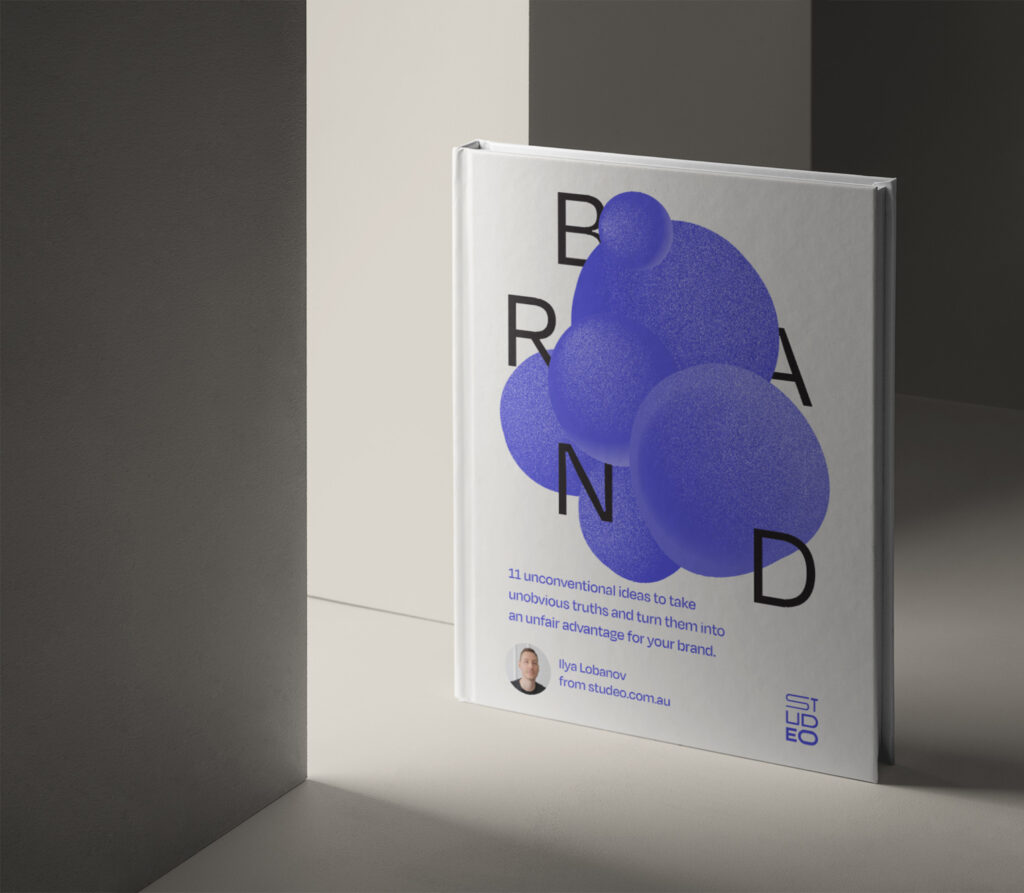How to do Customer-Centric Branding Properly

Customer centricity has become somewhat of a joke in branding.
Every second branding agency claims to focus on building human-first brands.
And every other brand is on the wagon, boasting about their customer-centric brand values.
I am not exempt from this, and I’ve spoken about adopting a customer-centric approach to branding before.
The good news is that you can walk the talk, as opposed to just using the statement as an empty claim on your website.
Allow me to share a perspective to help you transform customer-centricity from a cliche (like professionalism, high quality, and trust) into an actionable strategy for your brand.
Customer-centric branding 101: think of yourself as a customer first
Throughout my late twenties, I’ve suffered from headaches. Every third or fourth day.
Now, if you were to look at my lifestyle back then you could probably spot a few potential causes for the headaches.
Like the frequent partying and drinking. The all-nighters playing video games. My PC and workstations setup at home and in the office.
The headaches could have easily been caused by the neck strain brought on by the poor ergonomic design or the eye strain after looking at a computer screen for extended periods of time.
But if a designer of ergonomic workspaces tried to sell me their services or an eye specialist tried to sell me glasses I didn’t know I needed, I wouldn’t buy.
That’s because most of us only tend to buy when we a) become aware of our problem and are ready to solve it, b) begin to proactively research and assess solutions that can help us, and c) discover the solutions that demonstrate how we can achieve the necessary transformation.
From unaware to becoming a customer
As a business providing a service or a product, you can split everyone into two groups of people.
The first group is those who will probably never buy what you have. And no amount of selling will convert them.
The second group is customers (current, future, or potential*).
Where they are in their customer’s journey (or buyers’ journey) in relation to your brand is individual. And so your approach needs to be tailored to each stage.
Awareness
Not every potential customer will be aware that they have a problem you can solve, or be aware of your product or services. Your job is to focus your messaging on linking the potential causes to their problems, making them aware of the connection. In my case, that would be talking about the workstation ergonomics, headaches, and eyesight.
Assessment
Those who are aware of the link and are ready to overcome their obstacle will be on the lookout for a possible solution. They will be assessing their options and researching companies, products, and services that could help them. This is where you show them why they should choose you over others. Why are your glasses better than Specsavers?
Acquisition
Don’t be the guy that grabs the girl’s number, and then never calls. When the warm leads become hot, you need to demonstrate how effortless you will make the required transformation for them. Even if you are on top in the comparison table among other competitors in the previous stage, you can still fail to acquire the customer if you drop the ball here.
Advocacy
The work is not done yet. Once a prospect becomes a customer, your goal should be to make sure they are so satisfied that they can’t help but rave about you to their friends, colleagues, and family members. You want them to become your raving fan. Your free advertising ambassador. Your loyal brand advocate.
Customer-centric branding: touchpoints
As the saying goes, knowing is half the battle.
But that’s a fallacy. Just knowing without acting is not going to help push the needle forward. You need to translate that knowledge into actionable outcomes for your brand.
What can you put in place in relation to the four customer journey stages above?
Thinking about it in terms of customer touchpoints might be helpful.
For example, you might identify that a large percentage of people suffering from headaches (because of their poor posture, ergonomics, or eyesight) are younger people who like to play video games.
You may then consider placing an infomercial or an article in a gaming magazine, talking about the benefits of a well-designed ergonomic setup.
Or if you’re thinking about converting those into loyal advocates, why not surprise them with a gift card to a gaming store?
Walking the customer-centric branding talk
Ultimately, as far as I’m concerned, being a customer-centric brand should be the default setting for every business.
And it begins by analysing the experiences a customer (current, future, or potential) may have with your brand and your industry, and identifying ways to design those touchpoints.
Another helpful way to think of the customer journey may be to consider it as a clock. Pre-purchase, purchase, post-purchase. Then adjust your branding and marketing efforts around those.
However, the biggest transformation you need to make to go from a brand that uses customer-centricity as a cliche to one that walks the talk is internal culture.
“Ultimately, it’s the culture that drives a brand’s promise into operations, and then into the customer experience.”
– Denise Lee Yohn
Enjoyed this article?
If you found this article insightful consider joining me for an online event on the 18th of May 2022 ‘How to run strategic brand workshops’. You can get your ticket and learn more here.
*A quick side note regarding the distinction between future and potential customers. I would define future customers as ‘not yet customers’. Essentially, where the likelihood of them becoming your customer or a customer of your competitors as being very high on their own accord. Typically, those would be somewhere in the assessment stage of their customer journey – aware of their challenge, looking to solve it. With potential customers, you may need to get creative on warming them up to awareness – they are usually unaware of their problem, and often defensive about admitting that they have one.
